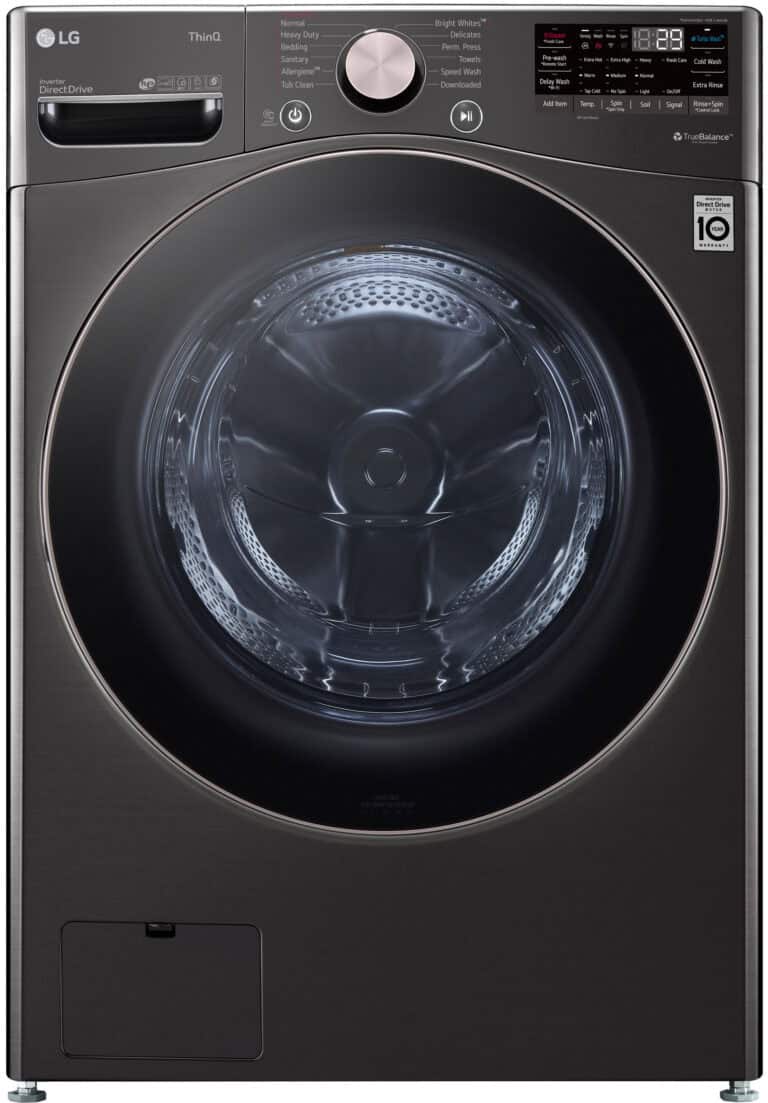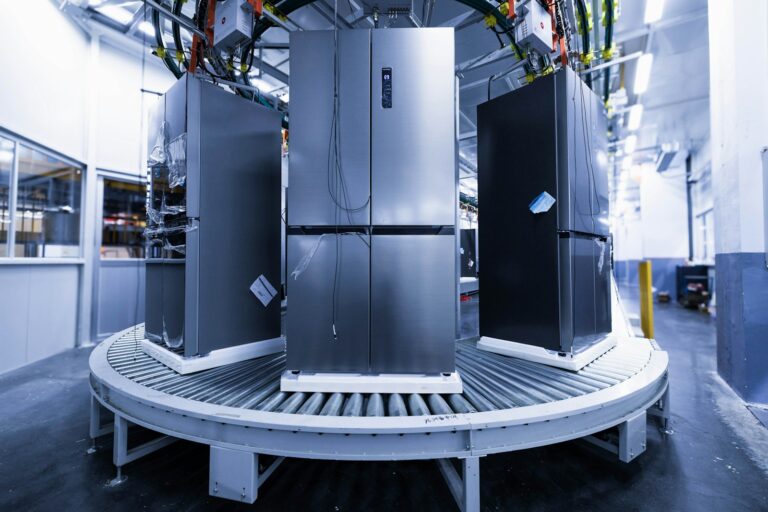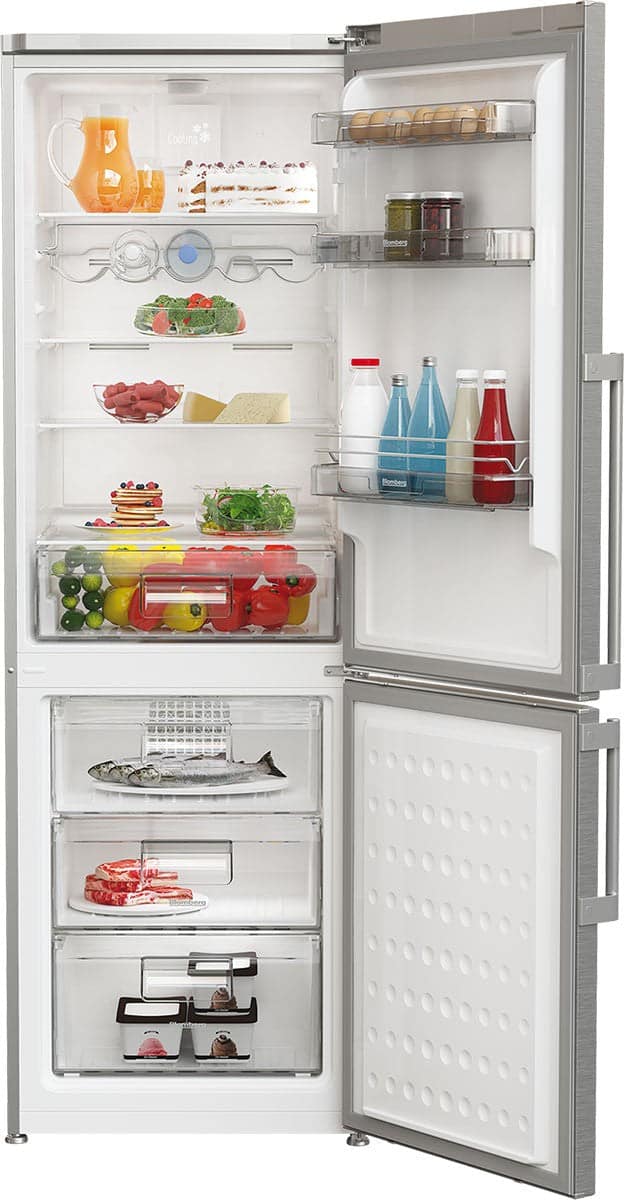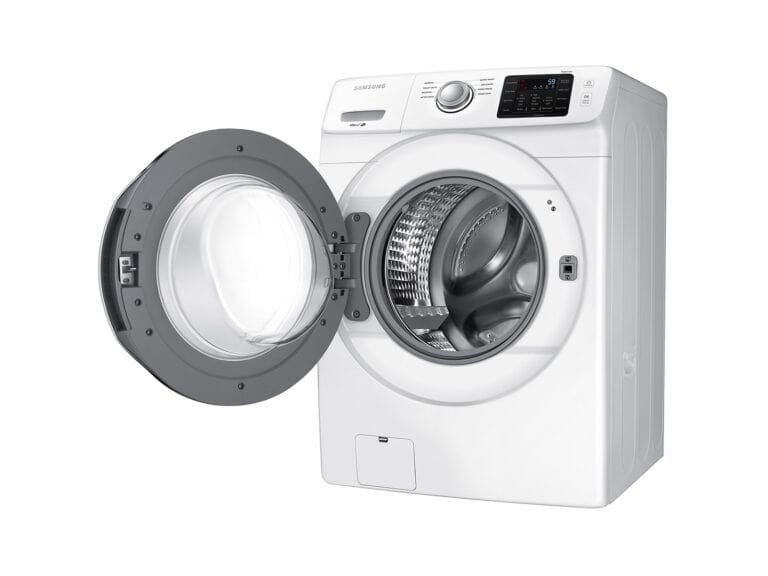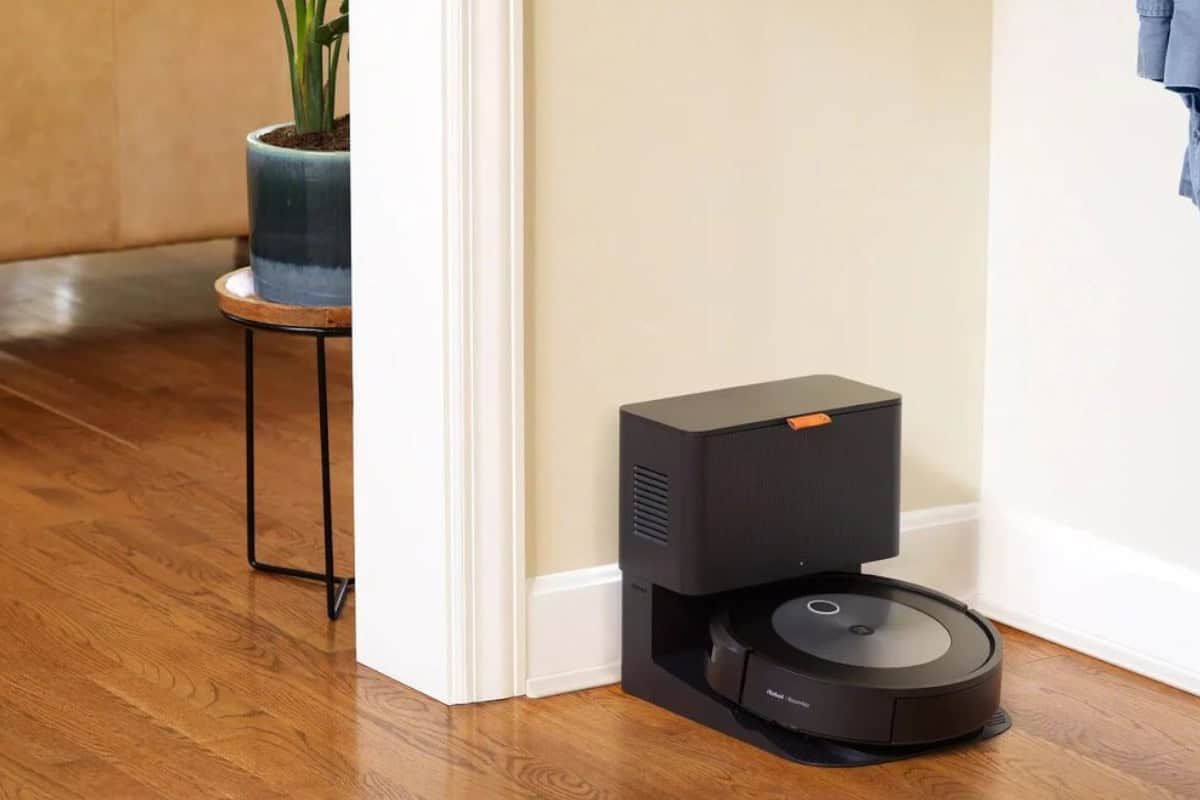
A Roomba is a small round robot that cleans your floors without you needing to push it around. These helpful devices are made by a company called iRobot and have become very popular in homes around the world. Roombas are autonomous robot vacuums that use sensors to navigate rooms, detect dirt, and clean floors with minimal human intervention.
These clever machines come in different models with various features. Some Roombas can only vacuum, while others can both vacuum and mop your floors at the same time. The Roomba Combo models offer this dual functionality, giving your home a hands-free, deeper clean. They can work on many floor types and even learn your home’s layout over time.
Robot vacuums like Roomba use special technology to clean efficiently. They have sensors that detect walls and furniture, helping them avoid bumping into things while cleaning. Many models can be scheduled to clean at specific times and can automatically return to their charging stations when their batteries run low.
What Is a Roomba: The Smart Robot Vacuum Explained
A Roomba is a smart, autonomous vacuum cleaner developed by iRobot. It’s designed to automatically clean your floors with minimal human intervention — navigating around furniture, detecting dirt, and returning to its charging dock when needed. Since its debut in 2002, Roomba has become synonymous with robot vacuums, evolving into a powerful cleaning assistant that uses advanced sensors, mapping technology, and AI-driven features.
🧠 How a Roomba Works
Modern Roombas combine mechanical cleaning components with smart navigation systems to clean efficiently and safely.
1. Navigation and Mapping
Roombas use a combination of:
- VSLAM (Visual Simultaneous Localization and Mapping) — a camera-based system that maps your home and tracks the robot’s position in real time.
- Infrared and acoustic sensors — detect walls, furniture, and drop-offs (like stairs).
- Smart Mapping — newer models create detailed floor maps you can view and customize in the iRobot app (source: Rosenberry Rooms).
2. Cleaning System
Roomba vacuums use a three-stage cleaning process:
- Agitate: Brushes loosen dirt and debris.
- Lift: Dual multi-surface rubber rollers capture the debris.
- Suction: A high-efficiency vacuum motor pulls it into the dustbin.
Premium models like the Roomba j9+ or s9+ feature Power Boost suction for carpets and automatic dirt disposal into a base station.
3. Sensors and Dirt Detection
Roombas use Dirt Detect™ technology to identify high-traffic or dirtier areas, focusing extra cleaning where it’s needed most. Sensors also prevent collisions and falls (source: Home Securely).
📱 Smart Features
Modern Roombas are more than just cleaners — they’re connected home devices.
- Wi-Fi and App Control: Use the iRobot Home app to start, schedule, or monitor cleaning sessions.
- Voice Assistant Integration: Works with Amazon Alexa, Google Assistant, and Apple Siri.
- Smart Mapping Zones: Set “no-go” areas or target specific rooms.
- Automatic Recharging and Resuming: If the battery runs low mid-clean, Roomba recharges itself and resumes where it left off.
🏡 Benefits of Using a Roomba
- Hands-free cleaning: Great for busy lifestyles.
- Pet-friendly: Excellent at picking up pet hair and dander.
- Adaptive cleaning: Adjusts to different floor types automatically.
- Time-saving: Keeps floors clean daily with minimal effort.
⚙️ Popular Roomba Models (2025)
| Model | Key Features | Best For |
|---|---|---|
| Roomba Combo j9+ | Vacuum + mop, self-emptying, AI mapping | All-in-one cleaning |
| Roomba s9+ | Deep suction, corner-optimized design | Carpets & corners |
| Roomba i7+ | Smart mapping, automatic dirt disposal | Everyday cleaning |
| Roomba 694 | Budget-friendly, basic smart navigation | Small homes or apartments |
(Source: Home Securely)
🧩 The Future of Roomba
As of 2025, iRobot continues to integrate AI learning, object recognition, and multi-surface adaptability. Future Roombas are expected to identify items like cords, shoes, and pet waste — avoiding them automatically.
✅ In Summary
A Roomba is more than a vacuum — it’s a smart home cleaning assistant that uses sensors, mapping, and AI to keep your floors spotless without lifting a finger. Whether you live in a small apartment or a large home, there’s a Roomba model designed to fit your needs and lifestyle.
Key Takeaways
- Roombas are autonomous robot vacuums that clean floors independently using sensors to navigate around obstacles.
- Some Roomba models offer both vacuuming and mopping capabilities in a single device for more thorough cleaning.
- Robot vacuums become more efficient over time as they learn your home’s layout and can be scheduled to clean when it’s most convenient.
Understanding Roomba and Its Technology
Roomba represents one of the most significant advancements in home cleaning technology. These intelligent robot vacuums use sophisticated sensor systems and powerful cleaning mechanisms to navigate homes independently.
The Evolution of iRobot’s Roomba
The Roomba journey began when iRobot introduced its first robot vacuum in 2002. Since then, the technology has evolved dramatically through multiple generations of devices.
Early models used basic bumper sensors to navigate, while modern Roombas employ advanced sensors to detect walls and objects. The navigation systems have progressed from random patterns to more efficient systematic cleaning routes.
Recent Roomba models incorporate sophisticated mapping capabilities, allowing them to create digital floor plans of homes. This technology enables them to clean more efficiently and remember room layouts for future cleaning sessions.
Some premium Roombas now include camera-based navigation and AI-powered object recognition. These features help the robots identify and avoid obstacles like pet waste or cords, making them more reliable and effective.
How iRobot OS Powers Roomba Vacuums
The intelligence behind Roomba comes from its operating system, iRobot OS. This specialized software serves as the brain that controls all aspects of the robot’s functions.
iRobot OS enables navigation through gyros and optical sensors that help Roomba clean efficiently in neat rows. The system constantly processes data from multiple sensors to make real-time decisions about cleaning paths and obstacle avoidance.
The operating system grows smarter over time through machine learning capabilities. Each cleaning session provides data that helps improve future performance. This allows the Roomba to adapt to specific home environments.
iRobot OS also manages communication with mobile apps, voice assistants, and other smart home devices. This integration allows users to control their Roomba remotely and schedule cleaning sessions.
4-Stage and 3-Stage Cleaning Systems
The effectiveness of Roomba vacuums relies on their methodical cleaning systems. Different models utilize either 3-Stage or 4-Stage cleaning technology.
The 3-Stage Cleaning System features:
- Loosening: Side brushes sweep along edges and corners
- Lifting: Dual Multi-Surface Rubber Brushes flex to maintain contact with floors
- Suction: Powerful vacuum pulls dirt and debris into the collection bin
Advanced models employ a 4-Stage system that adds:
- Filtering: High-efficiency filters capture fine particles and allergens
These cleaning systems automatically adjust to different floor types, increasing suction power on carpets and reducing it on hard surfaces. The dual rubber brushes are designed to avoid tangling with pet hair, making Roombas particularly effective for pet owners.
Roomba’s Product Line Overview
iRobot offers a diverse range of Roomba robot vacuums to suit different cleaning needs and budgets. Their product lineup has evolved significantly since the first Roomba was introduced in 2002.
Comparing Different Series: J, I, and 600
The J Series represents Roomba’s premium offering with advanced navigation and cleaning capabilities. These models feature superior 3-Stage Cleaning Systems and the highest suction power in the lineup. The Roomba J9+ includes automatic dirt disposal and precision navigation.
The I Series provides a balance of features and affordability. The Roomba Combo® i5 combines vacuuming and mopping functions in one device. This series offers Smart Mapping technology that remembers multiple floor plans.
The 600 Series serves as Roomba’s entry-level option. These robots are more affordable but still include the essential cleaning technology. They use a random navigation pattern rather than the systematic mapping found in higher-end models.
For 2025, the lineup includes new variations such as the Roomba 105 Models which come in different configurations including vacuum-only options.
Innovative Features Across Models
Power-lifting Suction varies across the product line, with up to 40x suction in premium models compared to the base 600 series. This feature ensures deep cleaning on both carpets and hard floors.
The Smart Map technology allows higher-end Roombas to create and store multiple floor plans. Users can designate keep-out zones and target specific rooms for cleaning through the app.
All models include at least one Edge-Sweeping Brush designed to reach corners and edges where dirt collects. Premium models feature dual multi-surface rubber brushes that adjust to different floor types.
The Roomba Combo® 10 Max represents the latest in hybrid technology, offering both powerful vacuuming and advanced mopping capabilities. Its mop pad automatically lifts when carpets are detected.
The Roomba Combo® Essential provides basic 2-in-1 functionality at a more accessible price point, though with fewer advanced features than its premium counterparts.
Key Features of Roomba Vacuum
Roomba robot vacuums offer innovative features that combine advanced technology with practical cleaning solutions. These smart devices use sophisticated systems to navigate homes while providing customizable cleaning experiences.
Advanced Navigation Systems
Roomba vacuums employ cutting-edge navigation technology to clean efficiently. Most newer models use Smart Map technology that allows the robot to create a detailed layout of your home. This mapping capability helps the vacuum remember room layouts and avoid obstacles.
The vacuum moves in neat, orderly rows to ensure thorough coverage of the floor space. No random patterns here—Roombas clean methodically for complete coverage.
Dirt Detect™ Technology is another standout feature. This system identifies areas with more dirt and debris, prompting the Roomba to perform additional cleaning passes in those spots. The robot focuses extra attention where it’s needed most.
Built-in sensors prevent the Roomba from tumbling down stairs or getting stuck in tight spaces. These sensors constantly monitor the environment, helping the vacuum navigate around furniture legs and other common household obstacles.
Cleaning Customization with iRobot Home App
The iRobot Home App serves as a command center for Roomba owners. Through the app, users can schedule cleanings, adjust cleaning preferences, and receive maintenance alerts.
Users can set up cleaning schedules that fit their lifestyle. The app allows for daily, weekly, or custom cleaning timetables without needing to manually start the vacuum each time.
The app also enables cleaning passes customization. Depending on the mess level, users can select single or double passes for appropriate cleaning intensity.
Some models offer room-specific cleaning through the app. This feature lets users direct the Roomba to clean just the kitchen after cooking or the living room before guests arrive.
The app provides cleaning history and reports, showing where the robot cleaned and how long it took. These insights help optimize future cleaning sessions for better results.
Smart Integration with Voice Assistants
Modern Roombas connect seamlessly with popular voice assistants like Alexa, Google Assistant, and Siri. This integration brings hands-free control to robot vacuum operation.
Simple voice commands can start, stop, pause, or schedule cleaning sessions. Users can say phrases like “Alexa, tell Roomba to clean the kitchen” or “Hey Google, start my Roomba” for effortless operation.
Voice assistants also enable users to check on their Roomba’s status. Questions about battery level or cleaning progress receive immediate responses through the connected assistant.
This integration works particularly well in smart homes with existing voice assistant ecosystems. The Roomba becomes another controllable element in the connected home environment.
Some newer models even respond to more complex commands, including room-specific directions or cleaning intensity adjustments, all through natural voice interactions.
Capabilities for Specific Cleaning Challenges
Roomba robot vacuums are designed with specialized technology to handle different cleaning needs in the home. They combine smart detection systems with physical cleaning elements to tackle various messes effectively.
Handling Pet Messes with Specific Features
Pet owners face unique cleaning challenges that Roombas address with specialized features. Many Roomba models come with Dual Multi-Surface Rubber Brushes that resist tangling from pet hair—a significant improvement over traditional bristle brushes. These brushes flex and adjust to maintain contact with different floor surfaces, ensuring thorough pickup of pet hair and dander.
For homes with pets, Roomba offers enhanced suction power on models designed specifically for pet messes. The rubber brush design prevents hair wrapping, a common problem with traditional vacuum cleaners.
Some models include high-efficiency filters that trap 99% of pet allergens, helping to maintain better air quality in homes with furry friends. Pet-focused Roombas can identify areas with higher concentrations of pet hair and automatically increase cleaning intensity in those spots.
Dirt Detection and Deep Cleaning Technology
Roomba’s Dirt Detect™ Technology uses acoustic sensors to identify areas with higher concentrations of dirt and debris. When the robot detects these spots, it automatically performs additional cleaning passes until the area is thoroughly clean.
This intelligent system allows Roombas to focus extra attention on high-traffic zones, entry areas, and under dining tables where messes tend to accumulate. The technology works across multiple floor types, adjusting cleaning patterns based on the surface.
Advanced Roomba models can create detailed maps of homes and remember where dirt typically accumulates. This mapping capability enables them to target problem areas during future cleaning sessions without manual guidance.
The deep cleaning mode increases suction power and slows the robot’s movement for more intensive cleaning when needed. This combination of smart detection and targeted cleaning helps Roombas deliver better results than simple automated cleaning paths could achieve.
Integration with Home Cleaning Routines
Roomba devices go beyond basic vacuuming by seamlessly fitting into your daily life. The robots learn your habits and adapt to your specific needs through advanced technology.
Creating a Cleaning Schedule
The iRobot Home App makes scheduling easy by suggesting personalized cleaning times based on your household patterns. Users can set up regular cleaning sessions or create event-based automations that trigger the Roomba to start or stop cleaning at ideal times.
For example, the app might suggest running the vacuum when everyone leaves for work, or after mealtimes when crumbs are most likely to appear. This smart scheduling means floors stay cleaner with minimal input from owners.
The system also allows voice control integration, letting users simply tell their Roomba what to do without opening the app. This feature is particularly helpful when hands are full or for accessibility needs.
Features That Optimize Cleaning Results
Modern Roombas use machine learning to improve cleaning efficiency. The robots create Neat Rows during cleaning rather than random patterns, ensuring complete floor coverage with Overlapping Passes for thorough dirt removal.
The Vacuum and Mop capabilities in Roomba Combo models deliver simultaneous wet and dry cleaning, eliminating the need for separate devices. The SmartScrub technology adjusts pressure based on floor type and dirt level.
When cleaning is complete, many models return to their AutoWash Dock, which empties the Vacuum Bin automatically and prepares the robot for its next run. This personalized cleaning experience means less maintenance for users and more consistent results.
Additional Considerations When Choosing a Roomba
When selecting a Roomba robot vacuum, several factors beyond basic cleaning capabilities can impact your satisfaction with the device. Battery life determines cleaning coverage, while suction power affects performance on different floor types and with pet hair.
Examining Suction Power and Battery Life
Suction power is one of the most important features to evaluate when choosing a Roomba. Different models offer varying levels of power, with premium versions providing significantly stronger suction for deeper cleaning. The Roomba comparison chart shows that higher-end models typically offer 10x or greater suction compared to base models.
Battery life directly impacts cleaning coverage. Most modern Roombas provide 60-120 minutes of runtime on a single charge. Higher-tier models include “Recharge and Resume” functionality, allowing them to automatically return to their base station when low on power, recharge, and continue cleaning where they left off.
Floor type also affects both suction requirements and battery consumption. Carpet cleaning demands more power than hard floors, reducing overall runtime.
Accessories and Maintenance Requirements
All Roombas require regular maintenance to perform optimally. The vacuum bin needs emptying after each cleaning session in standard models, though “+” versions include self-emptying bases that can hold dirt for weeks.
Replacement parts represent an ongoing cost consideration:
- Filters: Require replacement every 1-2 months
- Brushes: Need replacement every 6-12 months
- Battery: Typically lasts 2-3 years
Advanced models feature dual multi-surface rubber brushes that resist tangling with pet hair, reducing maintenance frequency. These brushes also eliminate the bristle brushes found in older models that required more frequent cleaning.
Many retailers offer free shipping on new Roombas and replacement parts, which helps offset the long-term ownership costs. Bundles including extra filters or brushes provide better value for regular maintenance needs.
Frequently Asked Questions
Roomba owners often have specific questions about how these robotic vacuums operate and what to expect from them. These common questions cover everything from basic operation to model differences and maintenance needs.
How does a Roomba work?
Roomba vacuums use a combination of sensors, brushes, and suction to clean floors automatically. The robot navigates rooms using infrared sensors and bumpers to detect obstacles.
More advanced models like the Roomba j7 can recognize over 80 common objects to improve navigation. These smart robots create maps of your home to ensure efficient cleaning paths.
The underside features rotating brushes that sweep dirt into the suction path. Once cleaning is complete, the Roomba returns to its charging dock automatically.
What are the differences between the Roomba models?
Roomba models vary primarily in cleaning power, smart features, and price points. Entry-level models offer basic cleaning with limited mapping capabilities.
Mid-range models add features like room-specific cleaning and improved suction. Premium models like the Roomba Combo 10 Max offer both vacuuming and mopping functions with self-emptying capabilities.
Higher-end models also include advanced obstacle avoidance, personalized cleaning suggestions, and compatibility with smart home systems.
Can a Roomba replace a traditional vacuum cleaner?
For regular maintenance cleaning, a Roomba can effectively replace manual vacuuming in most homes. They excel at maintaining clean floors with minimal human intervention.
However, traditional vacuums may still be necessary for deep cleaning carpets or handling specific messes. Roombas work best as part of a cleaning routine rather than as the sole cleaning solution.
Many households use Roombas for daily maintenance and traditional vacuums for occasional deep cleaning.
What are the maintenance requirements for a Roomba?
Regular maintenance ensures optimal Roomba performance. The dust bin should be emptied after each cleaning cycle unless using a self-emptying model.
Brushes sometimes need cleaning when they stop spinning properly, as hair and debris can become tangled. Filters should be replaced every 1-2 months depending on usage.
Sensors and wheels should be wiped clean occasionally to maintain navigation accuracy. Most components can be easily accessed for cleaning by following the manufacturer’s instructions.
How does the Roomba perform on different types of flooring?
Roombas adapt well to various floor surfaces including hardwood, tile, laminate, and low to medium-pile carpets. They automatically adjust suction power when transitioning between floor types.
On hard surfaces, Roombas typically capture nearly all visible debris. Performance on carpets varies by model, with higher-end versions providing stronger suction for deeper carpet cleaning.
Some models might struggle with very dark flooring or high-pile carpets due to sensor limitations.
How does a Roomba handle pet hair and allergens?
Roombas are particularly effective at managing pet hair with their brush systems designed to prevent tangling. Many models feature HEPA filters that trap allergens and prevent them from recirculating.
For homes with pets, models specifically designed for pet hair offer enhanced suction and specialized brushes. The self-emptying feature available on premium models minimizes exposure to dust and allergens during bin emptying.
Regular filter changes are essential for maintaining allergen filtration effectiveness in homes with pets or allergy sufferers.

